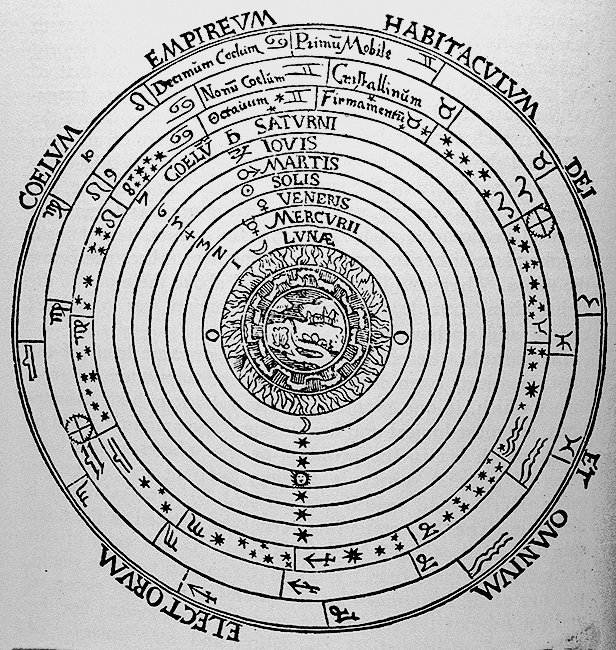Geocentrism vs Heliocentrism
Nineteen centuries ago, in the II century, a famous astronomer and mathematician called Claudius Ptolemaeus published and established a model which described the Universe with planet Earth at the centre. It was called the “Geocentric Model” (aka Geocentrism), and said that the Sun, Moon, and all other planets, including all other stars, orbited around Earth.

This model was accepted by everyone until, 14 centuries later, in the XVI century (1543) an astronomer and mathematician priest, called Nicolaus Copernicus, proposed a new model, called “Heliocentric model” (aka Heliocentrism), where the Sun was at the centre, with the Earth and all other planets orbiting around the Sun.

This model, as we very well know today, was then proven correct. But it took some time for people to believe it. Actually, when Copernicus published it, very few believed him. And the ones who did even faced charges of heresy. One of those was scientist Giordano Bruno, burned to death for teaching Heliocentrism.
The church banned Heliocentrism, because it contradicted the Catholic idea that humans were at the centre of the Universe. It took almost one century (1632) for people to start accepting it, when brilliant minds like Galileo Galilei (astronomer, physicist, engineer, mathematician) started pushing and giving credit to Copernicus.
And it was only 300 hundred years later, in the XIX century (1822), that the Pope officially removed the ban on Heliocentrism, even though the majority of the scientific community and the people had already started believing it 100 years earlier.
Corporatism vs Consumerism
All this to say that, in our days, we have a similar situation. Until not long ago, everyone believed in a model where Brands, Organisations, Companies were at the centre, and all Customers, Members, Citizens would orbit around them. Much like Geocentrism, let’s call this Corporatism.
(Please note that Corporatism is a term already in use with a few definitions. In this case, we define it as the control of the market by organisations).
But the truth is a new model has been found, and it has been already proven – by many in the Customer Experience community – to be the correct model. One where the Customer is at the centre, and all Brands, Organisations, and Companies orbit around the Customer. Much like Heliocentrism, let’s call this Consumerism.
(Please note that Consumerism is a term already in used with a few definitions. In this case, we define it as the control of the market by customers).
Similar to what happened with Copernicus and his Heliocentrism, Consumerism has not been totally accepted by many. And we still see in the market place a significant amount (maybe the majority, really!) of organisations still operating under Corporatism laws and practises.
The good thing is that reality is knocking on their doors, and the world has got to a point – with the advent of technology and social media – where Consumerism is inevitably swallowing those who insist in operate in models that are clearly obsolete. Customers are increasingly empowered and in the driving seat.
To avoid collapse, all those brands, organisations, and companies which still operate under Corporatism, will need to surrender to the Consumerism model, start focusing on Customer Experience, and undertake transformation. Become customer-centric, innovate, improve their business processes with an outside-in perspective.
It is not an easy task. But, with the help of the right specialist consultants, it will certainly not take those Brands, Organisations and Companies 300 years to change.